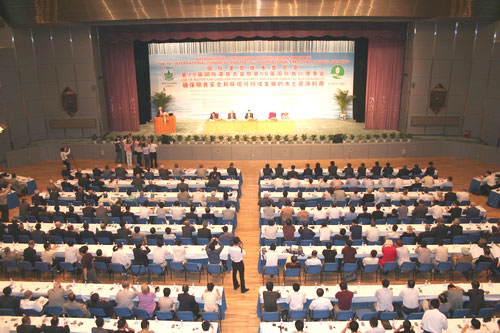
Drainage water can be disposed directly to open surface water bodies, e.g., rivers, lakes, outfall drains, seas or oceans. If drainage water is disposed off to large, open surface water systems with significant dilution or assimilative capacity, then water quality problems are minimized.
Ultimate disposal of drainage water to a river or sea is not always possible. Closed drainage basins present a unique environmental or water quality challenge. In such situations, evaporation ponds may be an appropriate means for disposing of drainage water. However, toxic substances could accumulate in the ponds. The health of waterfowl, fish and other aquatic biota which use the pond could be negatively affected. Furthermore, these ponds could become habitats for snails and mosquitoes, thereby causing malaria and schistosomiasis epidemics. In addition, if not properly managed, new waterlogged and saline areas will develop adjacent to the ponds.
There is now increasing interest in the utilization of natural and constructed wetlands to manage drainage water. Wetlands are particularly effective for removing sediment, N and P. Plant, soil and hydrologic parameters interact in a complex way to filter and trap pollutants, and to recycle nutrients. Certain tree and plant species have the potential to absorb pollutants. Residence time, flow rate, hydraulic roughness and wetland size and shape are some of the factors which influence treatment efficiency. The water supply to the wetland must be sufficient to provide an excess to discharge and prevent salt accumulation.
In areas where soils, geologic and hydrologic conditions do not permit constructed wetlands, the saline agriculture/agriculture-forestry system may be appropriate for the disposal of drainage water. The operating principle is to successively re-use saline drainage water to irrigate crops and trees of increasing salt tolerance, and to discharge the final much reduced volume of water into a solar evaporator for salt crystallization. The depth of water ponded in the evaporator is regulated to match the daily evaporation rate. The goal is to make the crystallization pond unattractive to flora and fauna. Another challenge of evaporation ponds is that evaporation is reduced as the ponds become more concentrated. This necessitates the use of additional land to maintain disposal (evaporation) capacity.
Related items you may like











































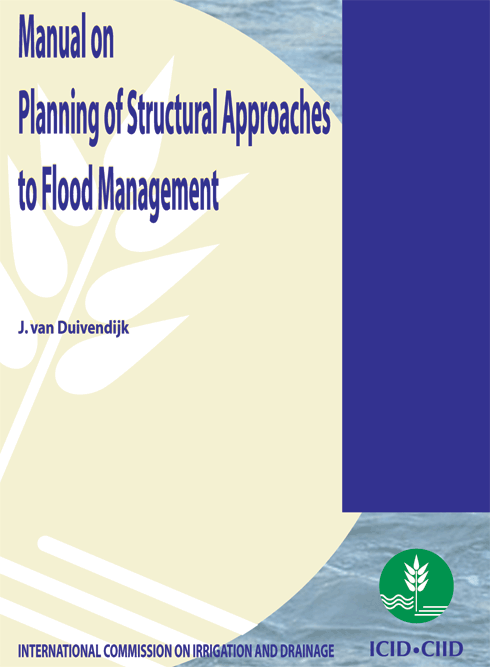
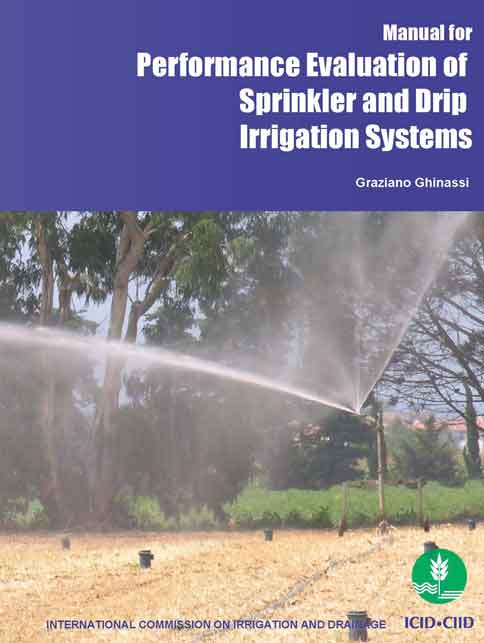




































































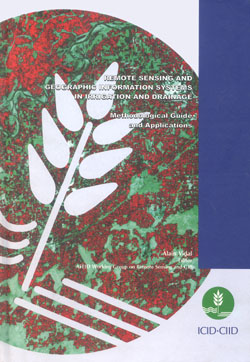



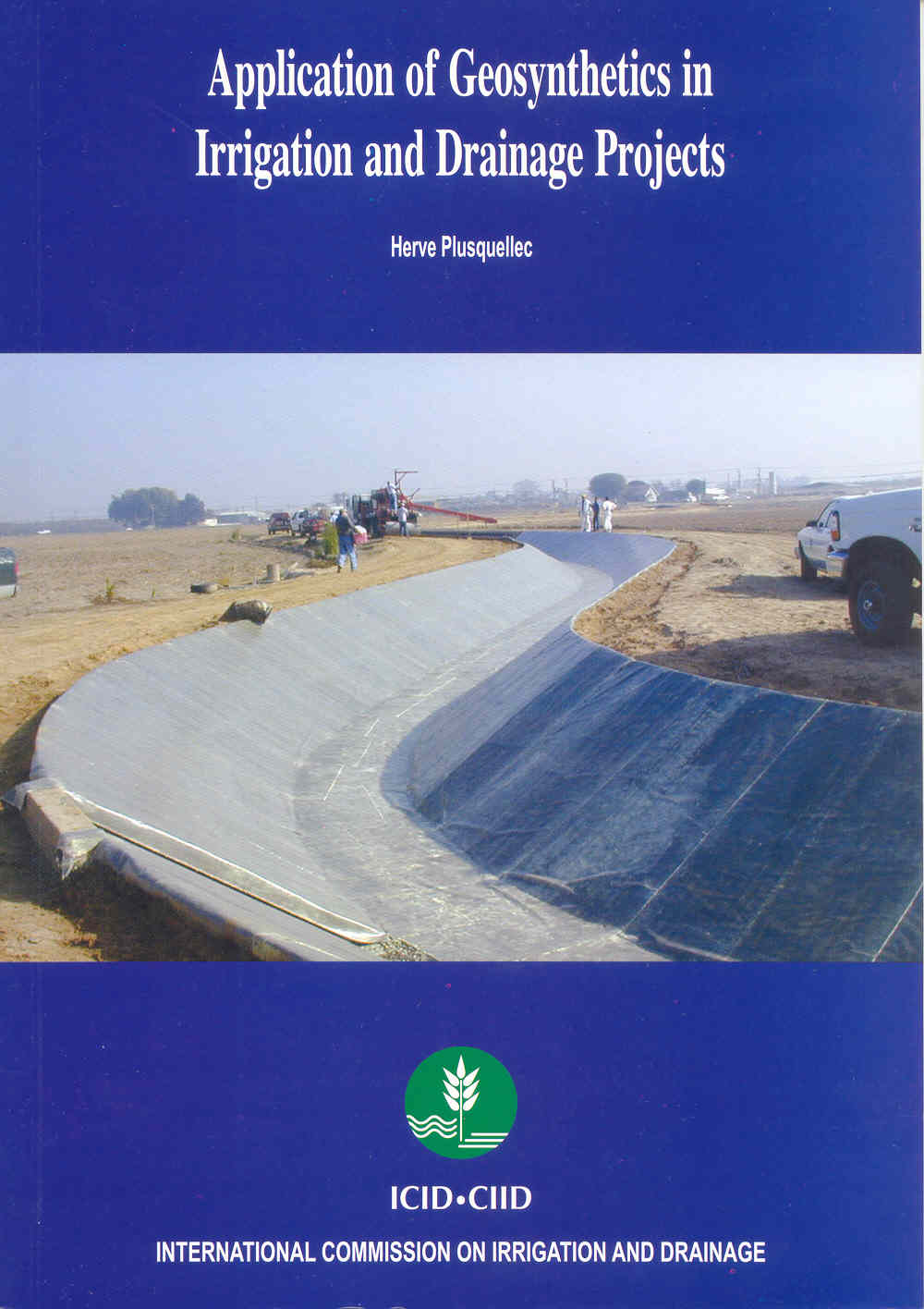



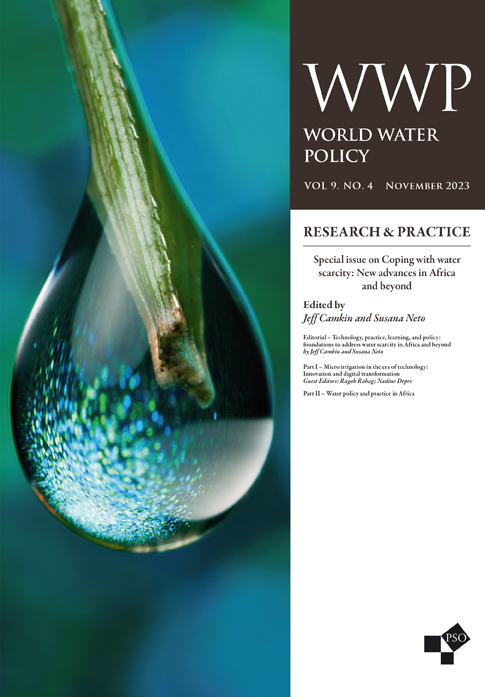
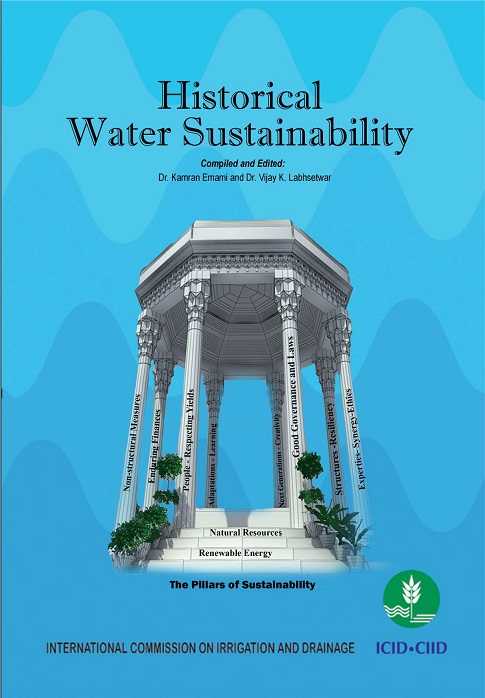





















































Irrigation
Sources of Irrigation
Irrigation History +
Sources of Irrigation +
IMPROVING SOIL MOISTURE +
Ponds +
Tanks +
Diversion Weirs +
Dams and Reservoirs +
Groundwater +
Conjunctive Water Use +
Wastewater +
Poor Quality Water +
Application of Irrigation water
Canal Irrigation +
Flood Irrigation +
Deficit Irrigation +
Supplemental Irrigation +
Sprinkler Irrigation +
Drip Irrigation +
Lift Irrigation +
Centre Pivot Irrigation +
Tidal Irrigation +
Micro-Irrigation Technologies for Small Holders +
Automatic Irrigation Systems +
Pressurized Irrigation +
Irrigation in Viticulture +
Purpose of Irrigation
Instruments and implements of Irrigation
Pumps +
Centrifugal Pumps +
Submersible Pumps +
Turbine and Jet Pumps +
Conveying Pipes +
Sprinklers +
Drippers +
Canal Automation Systems +
Irrigation Management
Economics of Irrigation System +
I&D System Types +
I&D Investment Functions +
I&D Management Issues +
Participatory I&D Management +
Equity in Irrigation +
Irrigation Services +
Irrigation and environment
Pollution and Irrigation +
Irrigation and Climate Resilience +
Environmental Aspects of Irrigation +
Environmental Impacts of Irrigation +
Green Lawn Irrigation +
Safe Use of Waste Water in Irrigation +
Organic Agriculture +
Soil Health +
Soil Health Management +
Quality of Irrigation Water +
Capacity Development
Drainage
Drainage Types and Systems
Agricultural Drainage +
Field Drainage systems +
Canal Irrigation and Drainage +
Surface Drainage Systems +
Subsurface Drainage +
Mole Drainage +
Bio-Drainage +
Regional Bio-Drainage +
Drainage Issues
- Surface water hydrology
- Geohydrology, Hydrogeology or Groundwater hydrology
- Hydrological year, or Water year
- Headwater, or Headwaters
- Slush, or Watery mud
- Snowmelt, or Snow water
- Water-equivalent of snow, Snow water equivalent
- Drainage area, Drainage basin, River basin, Catchment area, Catchment basin, Catchment, Watershed
- Experimental basin, or Experimental watershed (USA, AU)
- Water parting, Drainage divide, Divide, Watershed divide, Watershed boundary, Topographic divide
- Yield of drainage basin, Annual yield of drainage basin
- Storm runoff or Storm-water runoff
- Groundwater runoff
- Drainage modulus, or Drainage coefficient
- Watershed leakage
- Headwater storage
- River basin management, Watershed management, or River management
- River basin model, or Watershed model (US)
- Ungauged basin, or Ungaged watershed (US)
- Water balance, or Water budget
- Groundwater storage
- Groundwater province
- Subsurface water, Underground water, or Subterranean water
- Groundwater
- Zone of aeration, Aeration zone, Zone of suspended water, or Unsaturated zone
- Belt of soil water
- Interstitial water
- Suspended water
- Capillary groundwater, or Fringe water
- Intermediate water
- Vadose water, Gravity suspended water, or Gravitational water
- Groundwater table
- Free groundwater, Phreatic water, or Non-artesian water
- Confined water, or Confined groundwater
- Perched water, or Perched groundwater
- Semiperched groundwater
- Fixed groundwater
- Connate water
- Adsorption water
- Attached groundwater
- Cavern water
- Cavern water reservoir
- Fissure water, or Fault water
- Juvenile water
- Metamorphic water
- Meteoric water
- Pore water
- Primitive water
- Rejuvenated water
- Water of compaction
- Water of infiltration
- Influent water
- Water of condensation
- Groundwater flow
- Artesian water
- Groundwater reservoir
- Water-bearing media or Water-bearing strata
- Groundwater artery
- Groundwater divide
- Water-table spring
- Water-table contour, or Groundwater contour
- Hydro-isobaths, or Isobaths of water table
- Belt of fluctuation of water table, or Belt of phreatic fluctuation
- Phreatic decline, or Decline of water table
- Cone of water-table depression, or Cone of pumping depression
- Phreatic fluctuation, or Fluctuation of water table
- Groundwater cascade
- Groundwater dam
- Highest stage of the water table, or Phreatic height
- Groundwater ridge
- Interstream groundwater ridge
- Groundwater mound, or Groundwater hill
- Groundwater trench
- Groundwater withdrawal, or Groundwater extraction
- Water table
- Water surface (groundwater)
- Phreatic low, or Lowest stage of the water table
- Natural water table
- Profile of water table
- Perched water table
- Semiperched water table
- Field capacity, Normal field capacity, Normal moisture capacity, Maximum field carrying capacity, Field capillary (moisture) capacity, Effective water-holding capacity, Specific retention
- Effective velocity (of groundwater), Actual velocity (of groundwater), True velocity (of groundwater), or Field velocity (of groundwater)
- Apparent velocity (of groundwater)
- Average velocity (of groundwater)
- Critical velocity (of groundwater )
- Groundwater turbulent flow
- Groundwater recharge
- Groundwater balance, or Groundwater budget
- Groundwater increment, or Groundwater accretion
- Groundwater decrement
- Groundwater inventory
- Groundwater equation
- Groundwater management
- Groundwater model
- Absorbed water
- Groundwater balance
- Groundwater basin
- Zone of fluctuation of water table, or zone of phreatic fluctuations
- Dead water
- Water surface slope
- Water-stage recorder, or Water-level recorder
- Freshwater
- Surface water
- Watershed
- External drainage
- Ponded water
- Freshwater lake
- Centimetre of water
- Head of water in metres
- Head of water in metres
- Backwater
- Backwater curve
- Backwater effect
- Bed building stage of river, or Mean water stage of river
- High water training, or Training for discharge
- Low water training, or Training for depth
- Mean water training, or Training for sediment
- Tail water erosion
- Moisture content, Water content or Moisture percentage
- Water-depth ratio
- Hygroscopic moisture, Hygroscopic water, or Moisture of condensation
- Capillary moisture, or Capillary water
- Combined water
- Bound water
- Imbibation moisture, or Water of imbibation
- Water of saturation
- Water of supersaturation, or Water of dilation
- Moisture-holding capacity, Saturation capacity or Maximum water capacity
- Actual water deficiency
- Unavailable soil moisture, or Unavailable water
- pF of soil water
- Adhesive water, or Pellicular water
- Soil water zone
- Available water
- Soil water deficit
- Soil water tension
- Plerotic water
- Superfluous water
- Gravitational water
- Internal drainage
- Waterlogging
- Waterlogged low land
- Bio-drainage
- Drainage head
- Slack water, or Slack tide
- Tidal water level
- Low water of ordinary spring tides (LWOST)
- High water line of tide
- Indian spring low water
- Watershed management
- Endogenic drainage
- Allogenic drainage
- Endoreic drainage
- Areic drainage
- Exoreic drainage
- Operation waste, or Escaped water
- Waterway
- Standard waterway, Theoretical waterway, or Normal waterway
- Lacey`s waterway, or Lacey`s wetted perimeter
- Contracted waterway
- Dewatering
- Surface area of reservoir, or Maximum water surface area
- Water surface
- Maximum water level
- Retention water level, Top water level, Normal top water level, Full supply level, or Normal water level
- Exceptional water level, or Abnormal water level
- Normal water surface elevation, Normal water level, Conservation water level, Storage level, Normal pool level, or Conservation storage level
- Drainage gallery
- Drainage wells
- Waterstop
- River sluices, Waste outlets, or Dewatering outlets
- Horizontal drainage blanket, Pervious blanket, or Drainage filter
- Water intake test
- Pore pressure, Pore water pressure, or Neutral stress
- Water turbine
- Water hammer
- Water seal
- Cup basin type water seal
- Tilted outlet type water seal
- Obstruction weir type water seal
- Baby siphon type water seal, or Maramsilli baby siphon type water seal
- Auxiliary siphon type water seal
- Overfall weir type water seal, or Priming weir type water seal
- Mechanically induced water seal
- Tudel type water seal, Stepped type water seal, Offset type water seal, or Joggle type water seal
- Clear overfall type water seal
- Baffle type water seal
- Stilling basin, Tumble way, Hydraulic energy dissipator, Water-stilling device, or Energy dissipating device
- Water cushion, Stilling pool, or Cistern
- Tailwater rating curve, or Downstream stage discharge curve
- Water-sediment complex
- Water level diagram
- Constriction water-meter
- Mixed water levels control gate
- Flushing water
- Superfluous water
- Extra water, or Escapages
- Surplus water
- Excess water, or Surcharge water
- Waste water
- Lockage water
- Thrift basin chamber, Economizing chamber, Water saving chamber, Thrift lock
- Headwater
- Tailwater
- Cross-drainage work, or Drainage crossing
- Level crossing, or Level drainage device
- Syphon aqueduct, Drainage syphon, Cross drainage culvert
- Drainage overpasses
- Venturi flume drainage crossing
- Cut-water
- Sharp (nose) cut-water, or Pointed (nose) cut-water
- Blunt (nose) cut-water
- Circular (nose) cut-water, or Half round cut-water
- Segmental cut-water
- Straight (line, surface) sharp cut-water, Equilateral cut-water, or Sixty degree straight sharp cut-water
- Elliptical cut-water
- Asymmetrical (nose) cut-water
- Ease-water, Fairing
- Overall waterway
- Clear waterway, Clear span
- Drainage culvert, or Supply culvert
- Water mill
- Water flour mill
- Pelton wheel, Pelton water wheel, Tangential turbine
- Groundwater conservation
- Groundwater mining
- Groundwater overdraft
- Water allowance
- Integrated Water Resources Management
- Water right
- Water sales
- Water account
- Water requirement
- Period of shortage of water
- Excess water
- Water-right
- Waterman, or Water bailiff
- Watercourses
- Sub-watercourses
- Down the watercourse turn
- Round the watercourse turn
- Catchment management
- Leasing management
- Public service management
- Cross drainage
- Flood management
- Nonstructural measures of flood management
- Structural measures of flood management
- Economic effectiveness of a flood management system
- Levee district, District water board, or Water board of polder
- Groundwater storeys
- Confined-water well
- Observation well, Groundwater station, Monitor well, or Piezometer
- Inverted drainage well, or Disposal well
- Depleted phreatic surface, or Depleted water table
- Cone of depression, Cone of pumping depression, Cone of influence, Cone of exhaustion, Cone of water table depression, or Cone of pressure relief
- Artesian water power
- Prospecting (groundwater)
- Dowsing, Water witching, or Divining
- Dowser, Divining rod, Dipping rod, Water witching stick, or Wiggle stick
- See-saw water lift, Picotah, Picottah, Piccota, or Pikota
- Improved water wheel, Chakram
- Water ladder, Chinese dragon wheel, Rahad
- Water wheel
- Undershot water wheel
- Irrigation from groundwater
- Irrigation by flood water spreading
- Preliminary watering
- First watering
- Irrigation through buried drains, Irrigation-drainage, or Vallenhove process
- Injected water ratio, or Driving water ratio
- Irrigation water
- Profitable crop water requirement, or Unit water requirement
- Water requirement, Net water requirement, Total water requirement
- Optimum water requirement
- Irrigation water requirement, Irrigation need
- Critical water deficit
- Possible water expenditure
- Crop water requirement
- Actual water income
- Desired water income
- Duty, or Water duty
- Designed duty of water
- Economic water duty
- Consumptive water use or Consumptive use
- Effective water use
- Water application efficiency
- Water storage efficiency
- Irrigation efficiency, Farm irrigation efficiency, Farm delivery efficiency, Water conveyance and delivery efficiency, or Overall efficiency
- Irrigation water-requirement
- Available soil water storage
- Field water balance
- Groundwater table
- Method of water delivery
- Peak period crop water requirements
- Soil water stress
- Soil water content
- Soil water tension
- Total available soil water storage
- Total soil water storage
- Crop water use efficiency or Crop water use index
- Irrigation water use efficiency
- Level of satisfaction of the water requirement of users
- Drainage
- Drainage channel
- Artificial drainage
- Lowland drainage
- Agricultural land drainage
- Drainage system
- Closed-drainage area, Blind drainage area, or Non-contributing area
- Drainage benefit
- Degree of drainage
- Surface water
- Field drainage
- Field drainage system
- Land drainage
- Natural drainage system
- Perched water table
- Seepage drainage
- Subsurface drainage system
- Open channel drainage
- Surface drainage
- Groundwater table
- Main drainage system
- Watershed
- Artesian water
- Water bearing
- Drainage fittings
- Drainage pump sump
- Drainage trench
- Drainage head
- Horizontal subsurface drainage system
- Natural drainage or Natural drainage capacity
- Improved drainage or Artificial drainage
- Random drainage system
- Trenchless drainage
- Open-channel drainage
- Convergent drainage pattern
- Natural drainage systems, or Random drainage systems
- Cutoff drainage system, or Intercepting drainage system
- Herringbone drainage system
- Gridiron drainage system
- Double-main drainage system
- Composite drainage system
- Grouping drainage system
- Zigzag drainage system
- Cross-slope ditch system, or Drainage-type terraces
- Drainage-density
- Drainage pattern
- Superposed drainage, Super imposed drainage or Inherited drainage
- Subsurface drainage, Under drainage, Subsoil drainage, Underground drainage, or Covered drainage
- Relief drainage system
- Convergent drainage system
- Elkington drainage system, Sink-hole drainage
- Rerolle drainage system
- Across-the-slope drainage system, or Keythrope drainage system
- Vertical drainage, or Inverted well
- Mole drainage
- Surface drainage system
- Drainage coefficient, Drainage modulus or Drainage design rate
- Drainage design rainfall
- Drainage efficiency
- Drainage season
- Excess water
- Field capacity, Field moisture capacity, Normal field capacity, Normal capacity, Capillary capacity, Maximum field carrying capacity, Field capillary (moisture) capacity, Effective water holding capacity
- Free water
- Phreatic water
- Soil water head
- Total head, Total hydraulic head or Total soil water potential
- Unconfined water
- Angular drainage pattern
- Arterial drainage
- Dendrite drainage
- Drainage boards (also called prefabricated drains)
- Slot drainage
- Water devide
- Radial drainage pattern
- Trellis drainage pattern
- Drainage density
- Vertical subsurface drainage system
- Backwater gate
- Drainage pumping station, Drainage pumping plant
- Water gate
- Waterproof cement
- Water repellent cement
- Water-reducing agent, or Wetting agent
- Water-repelling agent
- Water-cement ratio
- Moist curing, Water curing
- Bulk density, Void content, Specific gravity, Water absorption
- Water paints
- Water coffer dam
- Batchers, Aggregate batcher, Water batcher, Cement batcher
- Dewatering
- Semi-automatic field water distribution system, or Partially automatic system
- Water level control system (pumps)
- Management account of farm unit
- Efficiency of the resource management
- Water resources of artificial origin
- Soil management
- Water erosion
- Headwater erosion
- Aggressive water
- Total potential (of soil water)
- Soil water pressure
- Water content
- Soil Water Characteristics Curve
- Differential water capacity
- Soil water diffusivity
- Water control
- Watershed management
- Pond management
- Pasture management
- Drainage terrace, Drainage control terrace, Interception and diversion terrace, Runoff control terrace, or Channel terrace
- Grassed waterways, or Sod waterways
- Water salinity
- Waste water re-use
- Freshwater peat
- Resource management
- Water Resource
- Cold‑water fishery
- Warm‑water fishery
- Hazardous waste management
- Water pollution
- Water quality
- Waterborne diseases
- Water disturbance
- Groundwater contamination
- Industrial wastewater
- Raw water
- Reclaimed water
- Receiving waters
- Cooling water
- Wastewater
- Sanitary wastewater
- Municipal wastewater
- Domestic sewage, Domestic effluents, Domestic wastes, or Domestic wastewater
- Sullage water
- Stormwater runoff
- Stormwater overflow:
- Combined wastewater
- Compatible industrial wastewater
- Wastewater reclamation, waste water treatment
- Clarified wastewater
- Dewatering
- Decomposition of wastewater
- Coagulated wastewater
- Filtered wastewater
- Disinfected wastewater
- Oxidized wastewater
- Slow rate wastewater land treatment
- Rapid infiltration wastewater land treatment
- Overland flow wastewater land treatment
- Water quality management
- Water quality standards
- Drinking water standards
- Composite water sample
- Water quality criteria
- Waste management
- Integrated pest control, Integrated pest management(IPM)
- Water penetration
- Dystrophic water
- Drinking water supply
- Potable water
- Soft water
- Hard water
- Brackish water
- Salt water intrusion
- Land drainage
- Design drainage rate
- Soil drainage status
- Excessive drainage
- Imperfect drainage
- Surface water problem
- Water‑gathering surface
- Water neutral surface
- Water‑spreading surface
- Ground-water table control ditch
- Underdrainage
- Singular layout drainage design
- Natural drainage layout
- Composite layout drainage system
- Mole drainage
- Free drainage
- Poor drainage
- Land management
- Drainage basin
- Disaster risk management
- Groundwater flooding
- Risk management capacity
- Watershed
- Flood mark, High watermark, or Rack mark
- Flood meter, or Water level gauge
- Highest high water
- Overflowing, or Overtopping by high water level
- Water-retaining side, Wet side, or Outer side of the dike
- Emergency management
- Floodplain management
- Flood management
- Flood risk management
- Watercourse law
- Systems analysis, Operational analysis, System engineering, Mathematical modeling, Management science
- Management model
- Management space
- Water tunnel
- Refraction (of water waves)
- Diffraction (of water waves)
- Project, Scheme, Water project, or Water resources development project
- Watershed project
- Municipal water
- Industrial water
- Domestic water
- Commercial water
- Public water
- Recreational uses of water
- Agricultural water use
- Artificial groundwater recharge
- Demand management
- Groundwater system, or Groundwater basin
- Integrated river basin management
- Water conservation
- Watercourse
- Water management
- Water policy
- Water resources
- Cost Management
- Heavily modified water body
- Surface water body
- Water services
- Water resources appraisal
- Water resources survey
- Available water supply
- Phases of water resources development
- Underground water basin
- Partially developed underground water basin
- Fully developed underground water basin
- Groundwater investigations, or Geohydrological investigations
- Geochemical and geothermal water surveys
- Acceptance Management
- Aid coordination and aid management
- Catchment management
- Change Management
- Communications Management
- Issue Management
- Quality Management
- Tender Management
- Increment in land revenue, Water advantage rate, or Canal advantage rate
- Water rate, Water charge, Irrigation rate, or Irrigation assessment
- Water rental
- Minimum water rental charge
- Volumetric water rate
- Occupier`s water rate, or Crop water rate
- Agreement water rate, or Lease water rate
- Differential water rate
- Domestic, municipal and industrial water benefits
- Economic value of unit of irrigation water
- Revenue value of a unit of irrigation water
- Farmer`s family labour income, Farmer`s labour return, or Management return
- Risk Management
- Freshwater Lens













